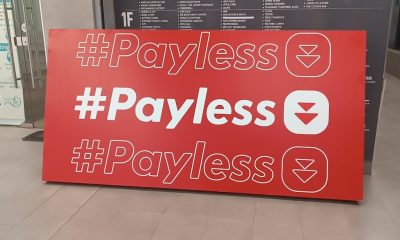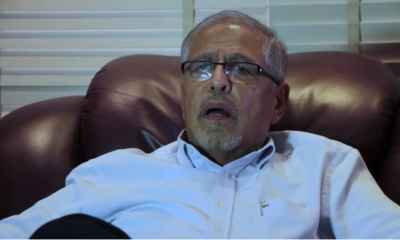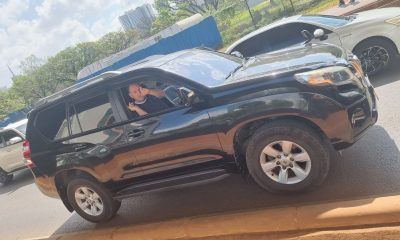Investigations
Reuters Special: Coronavirus Has Paralyzed Global Narcotics Trade, Something Authorities Worldwide Have Not

(Reuters) – Countries around the world have spent billions of dollars bailing out businesses affected by the coronavirus outbreak. Peru’s coca farmers, who grow the bushy plant used to make cocaine, say they want help, too.
Prices for coca leaves sold to drug gangs have slumped 70% since Peru went on lockdown last month, according to Julián Pérez Mallqui, the head of a local growers’ organization. He said his members cater to Peru’s tightly regulated legal coca market, but acknowledged some growers sell on the black market. Peruvian officials say more than 90% of the country’s coca crop goes to traffickers who are now struggling to move product.
With the sector in turmoil, Pérez’s group is crafting a plan to ask the government to buy up excess coca inventory.
Peru “has to design clear intervention strategies for coca,” Pérez said. “We’re screwed, just like everyone else in the world.”
A spokesman for Peru’s anti-drugs agency said it may funnel more development aid to hard-hit areas.
The coronavirus outbreak has upended industries across the globe. The international narcotics trade has not been spared. From the cartel badlands along the U.S.-Mexico border and verdant coca fields of the Andes, to street dealers in London and Paris, traffickers are grappling with many of the same woes as legitimate businesses, Reuters has found.
On three continents, Reuters spoke with more than two dozen law enforcement officials, narcotics experts, diplomats and people involved in the illicit trade. They described a business experiencing busted supply chains, delivery delays, disgruntled workers and millions of customers on lockdown. They also gave a window into the innovation – and opportunism – that are hallmarks of the underworld.
Cecil Mangrum, a narcotics detective with the Los Angeles Police Department, said an informant recently got a call from a Mexican connection offering 25 pounds of methamphetamine for $3,200 a pound. That’s more than triple the going rate from just a few weeks ago, and the highest price that he has seen for the powerful stimulant in his decade on the drugs beat.
“I wish there was a website (where) you could report the cartels for price gouging, because the prices are ridiculous,” Mangrum said.
Latin America is the epicenter of a global drugs trade that is estimated to be worth up to $650 billion a year, according to Global Financial Integrity, a U.S.-based think tank. Gangs reap huge profits producing and transporting cocaine, marijuana, methamphetamine, heroin and fentanyl that is sold worldwide.
The disruptions are likely to be short-lived, some anti-narcotics experts said. Cartels have proven adept at surmounting any obstacles. The pandemic will eventually ease, trade routes will open, customers and dealers will come out of their homes.
Still, coronavirus has managed to do what authorities worldwide have not: slow the global narcotics juggernaut almost overnight and inflict a measure of pain on all who participate.
In Mexico, the Sinaloa Cartel has faced many threats over the years, including the jailing of former leader Joaquin “El Chapo” Guzman. But never one like the coronavirus pandemic.
Disruptions to global trade have jacked up prices for imported chemicals such as ephedrine that are needed to manufacture meth, a major piece of the organization’s narcotics empire. Meanwhile, a partial shutdown of the U.S.-Mexico border to slow the spread of the virus has complicated distribution, according to two Sinaloa Cartel members who spoke with Reuters.
“As the border is closed, we are having problems crossing it,” said one of the people, who helps produce the synthetic opioid fentanyl for the syndicate.
Thousands of kilometers to the south in Brazil, drug gangs face similar distribution woes. At the giant seaport of Santos, the launching point for a substantial portion of South American cocaine headed for Europe, seizures last month were down 67% compared to March 2019, according to Brazil’s Federal Revenue Service. Ciro Moraes, the chief federal police officer in Santos, said it’s a sign that traffickers are experiencing their own personal “recession,” courtesy of COVID-19.
“This cripples their business,” he said, if only temporarily.
MEXICAN STANDSTILL
The United States is Mexico’s top trade partner and the No. 1 consumer of its illegal drugs. Last year some 950,000 people entered the United States daily on foot or in vehicles through dozens of checkpoints along the 1,954-mile (3,145km) border, according to U.S. Customs and Border Protection.
Most narcotics are smuggled in passenger cars that face far fewer checks than commercial trucks, security analysts said. The March 21 closing of the border to all non-essential travel has thrown a monkey wrench in that well-oiled machine.
“Everything has stopped at the border,” said the Sinaloa Cartel fentanyl “cook” who spoke with Reuters.
Wholesale prices are up about 10% in recent weeks, he added. A kilogram of fentanyl sold wholesale by his organization to a drug buyer in Sinaloa would go for about 12,000 pesos ($490), he said, but that price would soar to about $50,000 a kilo if delivered to New York.
Raw materials are also bedeviling the cartel. Fentanyl and meth, which kill tens of thousands of Americans each year, are made with chemicals often manufactured in China, India and Germany, Mexican and U.S. officials said.
They said factory closures, staff shortages, shipping slowdowns and tighter borders all along the methamphetamine precursor supply chain have created scarcity. A Sinaloa Cartel meth producer told Reuters that the outbreak had led to a threefold jump in prices for some ingredients, pressuring profit margins.
Seven anti-narcotics officials in the United States, including three U.S. Drug Enforcement Administration (DEA) officials, described a U.S. drugs market in flux.
Methamphetamine has been the most affected, with half of the DEA’s domestic offices reporting price rises, said one senior DEA source familiar with the agency’s nationwide assessment of coronavirus disruptions.
Supplies of fentanyl, the leading cause of U.S. overdose deaths, appear to be holding steady, several authorities said.
John Callery, Special Agent in Charge of the DEA’s San Diego Field Office, said drug prices in his sector were up about 20% across the board, except for methamphetamine, whose price has more than doubled in the last couple of weeks to as much as $2,000 a pound. Price gouging could be to blame, he said.
In cities with looser coronavirus lockdowns, illicit activity is more resilient, police said.
In Houston, the drugs market was holding up fine, as dealers still had hefty stockpiles, said Lieutenant Stephen Casko of the Houston Police Department. “As those reserves get used up, that’s when you’re going to start to feel the stress,” he said.
Jerome Washington, a sergeant in the El Paso County Sheriff’s office in Texas, said the decline in vehicle traffic had prompted dealers to reduce the number of drug runs they make across the border.
“They are just being more selective,” Washington said. “It’s like a numbers game: The more cars on roads, the more cars you can send across that will blend in.”
Cartels appear to be looking for alternative transport, U.S. officials said. There are signs the gangs are moving more product through cross-border tunnels, according to a senior CBP official. Increased sightings of drones and ultralight aircraft at the border suggest gangs may be ramping up aerial deliveries, he added.
“The smuggling tactic has changed,” the official said. Traffickers “either go over or under.”
Repatriating drug money to Mexico has also proved to be a headache, anti-narcotics agents said.
In Los Angeles, Mexican cartels launder illicit proceeds through storefront businesses in the city’s garment district, according to a senior DEA investigator in California. Profits from U.S. drug sales flow south in the form of exported household goods that the cartels sell in Mexico to get their cash, the agency said. But the closure of nonessential businesses in California has impeded that scheme, the DEA investigator said.
‘EVERYTHING IS PARALYZED’
South America was awash in cocaine long before anyone had heard of COVID-19. Record production in recent years has weighed on prices. Drug gangs ramped up exports, authorities said, shipping unprecedented quantities to longstanding markets in the United States and Europe, while cultivating new customers in the Middle East and Asia.
In the United Kingdom, cocaine seizures in the 2018/19 financial year reached 9.65 tonnes, the highest total since records began in 1973, and up nearly 200% compared with the 2017/18 total, the Home Office said.
In Peru, the world’s No. 2 producer behind Colombia, a national lockdown to stem the virus has functioned like a shutoff button on the country’s cocaine conveyor belt, according to Miguel Ángel Ramírez Vásquez, a senior member of Peru’s anti-narcotics police. With borders closed, flights reduced and roads more rigorously patrolled, he said gangs are having trouble moving drugs.
“Everything is paralyzed. Nobody is buying and nobody is selling,” Ramírez said.
Among the hardest-hit areas is the verdant valley of the Apurímac, Ene and Mantaro rivers. Known as the VRAEM, it produces around 43% of Peru’s 50,000-hectare harvest, according to the United Nations Office on Drugs and Crime. Pérez, the coca growers’ representative, said almost all of the region’s 500,000 people live off the crop.
The state-run National Coca Company (ENACO) purchases some of the country’s production for pharmaceuticals and beverages at prices well below what drug traffickers normally pay. But an estimated 93% of Peru’s crop is converted illegally into cocaine, ENACO has said.
Pérez said his group, known as FEPAVRAE, is discussing ways to get ENACO to buy up their excess coca. He declined to share details.
“It’s an internal discussion within the organization,” he said. “We’re working on it.”
Cristian Galarza, the general manager of ENACO, said he had not heard of the internal FEPAVRAE plan. But he was not surprised.
“Because of the coronavirus situation, everyone has to get creative and find alternatives,” he said. Still, he said it’s unlikely that ENACO, which has annual sales of about 35 million soles ($10.34 million), could help many of those affected.
“If there is a coca grower … who has been selling illegally, we won’t work with them,” Galarza said. “If they go to the other side, it’s difficult, they’ve crossed a line.”
Rubén Vargas, the head of Peru’s anti-drug agency DEVIDA, was also unaware of the coca growers’ plan. He said DEVIDA had already budgeted 70 million soles ($20.68 million) this year for rural development projects in the VRAEM, and may provide more to help areas most affected by the outbreak.
“We will work with all the social organizations and producers who have additional proposals in the framework of this emergency that we’re living,” he said.
Ramírez, the anti-drugs cop, was apoplectic about the growers’ plan.
“When it’s going well for them, they sell to drug traffickers; and when it’s going badly, they stick out their hand for government support,” he said. “What do they think they’re growing? Pineapples?”
SUPPLY PRESSURE
Across the border in Brazil, traffickers face the opposite problem: Cocaine prices are up sharply due to dwindling supplies, according to a federal police officer who spoke on condition of anonymity.
He said the wholesale price of a kilo of cocaine has risen 40% to 20,000 reais ($3,735) in recent weeks in the northern Amazon city of Manaus, a transit hub for moving Andean cocaine through Brazil and on to Europe.
While drugs are piling up in Colombia and Peru, “here (in Brazil) the price is expensive, as there is no product,” the federal cop said.
In the southeastern Brazilian port of Santos, Latin America’s biggest, seizures of Europe-bound cocaine have dwindled, according to Moraes, the federal police chief there. Customs officials nabbed just over a tonne of cocaine in March 2020, compared with 3 tonnes in the same month last year.
Moraes believes less cocaine is entering Brazil. He also suspects European demand is down, in part because trafficking outfits there are struggling to move the product amid lockdowns.
In France, the shutdown of bars and party venues has led to a decrease in the use of recreational drugs like cocaine, MDMA, ketamine and LSD, the French Monitoring Centre for Drugs and Drug Addiction (OFDT) said in an April report examining the impact of the pandemic on the nation’s illicit drugs trade.
Dealers have been quick to react to the new reality, the report said, with some maintaining a safe distance from clients and even “selling hand sanitizer, gloves and masks.”
Kenya Insights allows guest blogging, if you want to be published on Kenya’s most authoritative and accurate blog, have an expose, news TIPS, story angles, human interest stories, drop us an email on [email protected] or via Telegram
-

 Investigations2 weeks ago
Investigations2 weeks agoHow Land Grabbing Cartels Have Captured Ardhi House
-

 Business2 weeks ago
Business2 weeks agoPanic As Payless Africa Freezes With Billions of Customers Cash After Costly Jambopay Blunder
-

 News3 days ago
News3 days agoTemporary Reprieve As Mohamed Jaffer Wins Mombasa Land Compensation Despite Losing LPG Monopoly and Bitter Fallout With Johos
-

 News2 weeks ago
News2 weeks agoSCANDAL: Cocoa Luxury Resort Manager Returns to Post After Alleged Sh28 Million Bribe Clears Sexual Harassment and Racism Claims
-

 Investigations1 week ago
Investigations1 week agoHow SportPesa Outfoxed Paul Ndung’u Of His Stakes With A Wrong Address Letter
-

 Investigations3 days ago
Investigations3 days agoFrom Daily Bribes to Billions Frozen: The Jambopay Empire Crumbles as CEO Danson Muchemi’s Scandal-Plagued Past Catches Up
-

 News1 week ago
News1 week agoRentokil Boss Fraser Branch in Highway Smash as DUI and Racism Claims Surface
-

 Sports2 days ago
Sports2 days ago1Win Games 2025: Ultimate Overview of Popular Casino, Sports & Live Games

















